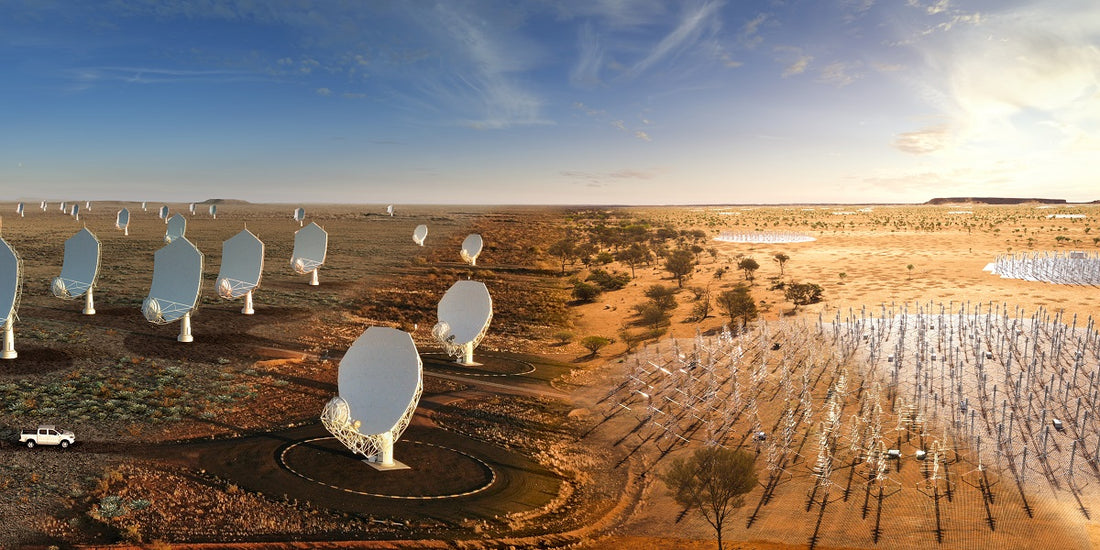
Half-Australian "World's largest radio telescope" To Be Built After Almost 3 Decades
Share
Almost 30 years in the making, construction of the Square Kilometer Array (SKA) observatory is finally starting.
Representatives from the SKA Organisation (SKAO) announced at the annual meeting of the European Astronomical Society (EAS) on Wednesday, 30th of June, that construction will start on the two sites in Australia and South Africa, where the two parts of the radio telescope network will be built.
With a total collecting area of one square kilometer, the telescope will listen to radio signals in the vast range of frequencies from 70 MHz to at least 25 GHz. Rather than relying on a single huge dish, it'll have a carefully designed system of dishes and antennas scattered across two locations. 197 dishes, each 15 meters in diameter, will be used at SKA-Mid, which is going up in the Karoo desert in South Africa. In Western Australia, north of Perth, the SKA-Low array will consist of 131,072 antennas listening to the lower frequency bands.
The construction was formally approved last week by the SKAO Council.
"I am ecstatic. This moment has been 30 years in the making," SKAO Director-General Philip Diamond said in a statement. "Today, humankind is taking another giant leap by committing to build what will be the largest science facility of its kind on the planet; not just one but the two largest and most complex radio telescope networks, designed to unlock some of the most fascinating secrets of our Universe."

The Square Kilometer Array Observatory will be able to look deeper into the Universe than any radio telescope before.
In a news conference that took place during the EAS annual meeting on Wednesday, 30th of June, Chiara Ferrari, who oversees France's contribution to this project, said the array will be able to detect objects that are so distant the radio waves take 13 billion years to reach Earth.
"SKA will be a game changer in many different fields, including astrophysics, cosmology and fundamental physics," Ferrari said. "It will be uniquely positioned to answer some outstanding questions about the evolution of galaxies and offer us a unique opportunity to start studying the raw material behind the formation and evolution of bright sources from the cosmic dawn to current years."
SKAO, which is expected to provide images of higher quality than the Hubble Space Telescope, according to the SKAO website, was first proposed in 1993 by the International Union of Radio Science. In February, the countries backing the project formed SKAO, which is the telescope's governing body. Each of the 16 SKAO member states contributed $1.55 billion construction of the telescope and the $0.83 billion required for the first decade of its operations.
Philipa Hartley, a postdoctoral fellow at SKAO, said in the news conference that the telescope will collect 13 terabytes of data per second, which is like downloading 300 high definition movies a second.
"The data will be uniquely complex compared to radio data and radio images we've had in the past," Hartley said. "That's because our telescopes are able to see farther into space than previous radio telescopes have been able to do. So our images will be uniquely busy, full of galaxies overlapping each other."
According to a timeline published with the announcement, the observatory will start making its first scientific measurements in 2024 after the first two sub arrays are completed.
Eventually, SKAO plans to add hundreds of dishes and thousands of antennas to the telescope.
Does this fix your appetite for dish-truction?
Share this with a mate to thrust Australia into the deep unknown…
#Space_Aus




